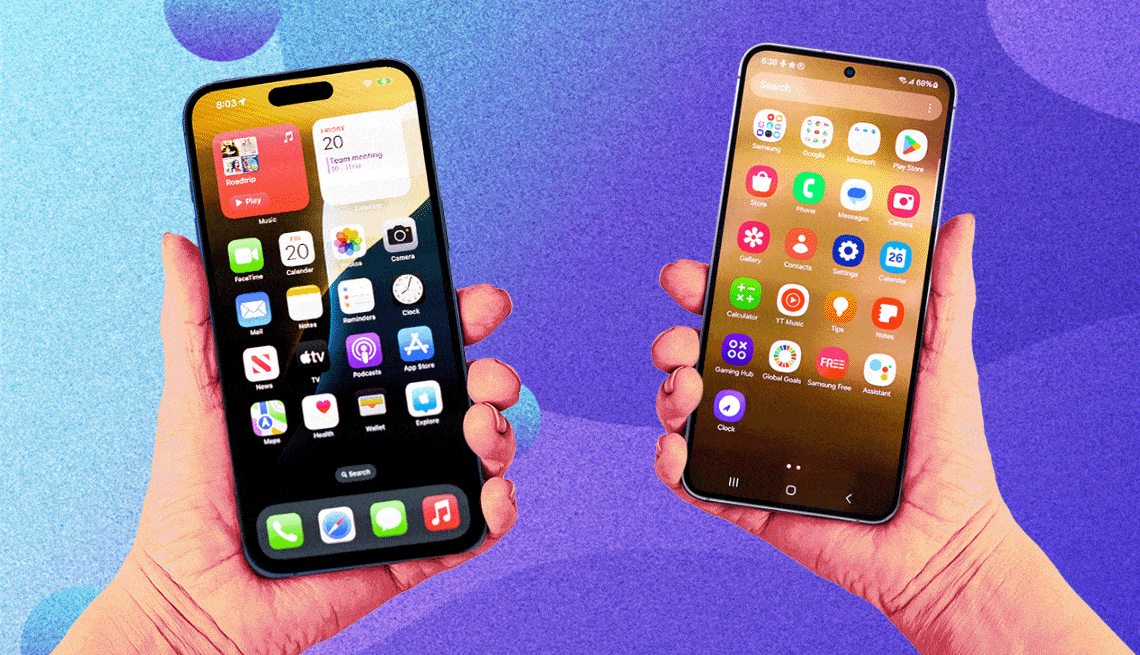AARP Hearing Center


Is it easy to switch from an iPhone to Android or vice versa?
Early in smartphones’ history, iPhone versus Android might have been as partisan as left versus right or Democrat versus Republican.
Your query suggests a certain pragmatism. You’ll find plenty of folks fiercely loyal to one smartphone platform over another.


AARP Membership— $12 for your first year when you sign up for Automatic Renewal
Get instant access to members-only products and hundreds of discounts, a free second membership, and a subscription to AARP the Magazine.
But Apple would love to woo Android customers just as much as Google wants to welcome iOS defectors. If you’re so inclined, a switch is relatively painless.
Smartphones are more alike than different
While people typically prefer the software of one platform over the other, Android and iOS have more in common than you might think. Both get you to the same mobile destinations and rely on similar touchscreen gestures.
For the most part, both use versions of the same apps, too, though you will come across platform-specific apps. If you switch operating systems, you’ll still be able to access your pictures and videos, and you may be able to preserve your chat history.
Accessories can be shared as well, especially since Apple has finally gone all in on the USB-C connector now common on Android. Wireless chargers are equally compatible.


Ask The Tech Guru
AARP writer Ed Baig will answer your most pressing technology questions every Tuesday. Baig previously worked for USA Today, BusinessWeek, U.S. News & World Report and Fortune, and is author of Macs for Dummies and coauthor of iPhone for Dummies and iPad for Dummies.
The motivation to switch?
Budget is always a factor. If a company comes out with a device that sounds like it will deliver most everything you want at a competitive price, that’s a reason to consider changing your loyalties.
Some people might switch if they learn of a new feature that their current phone doesn’t have. But in the long run, features tend to even out.
Peer pressure also may explain why some decide to defect. It’s subjective, but younger people tend to prefer iPhones and perhaps some older folks want to feel more, well, with it.
More switch from Android to iPhone than the other way around: Of folks who bought an iPhone during a period in the middle of 2024, 17 percent had previously owned an Android phone, according to Chicago-based Consumer Intelligence Research Partners. That’s a sharp increase from the same period a year earlier, when 10 percent of iPhone buyers previously owned an Android.
The company says the number of iPhone owners who switch to Android is small. Here’s how to make a switch in either direction:































































You Might Also Like
Is Your Smartphone Address Book Bloated? How to Trim It
The phone’s contacts list may be drowning in duplicatesHere’s How to Safely Remove Files From a Thumb Drive
Merely deleting files may leave crucial remnants99 Great Ways to Save 2024 Edition
Make your money work harder for you — and save on entertainment, health care and groceries
Recommended for You